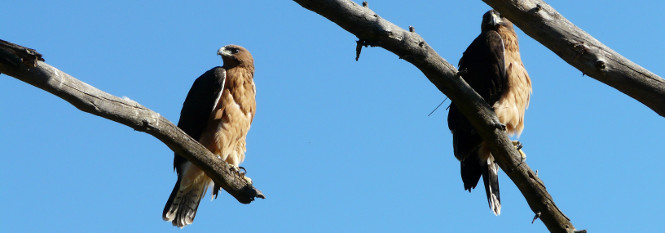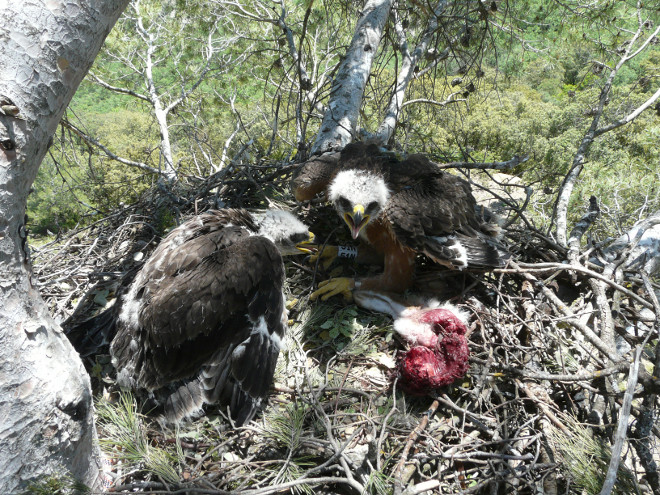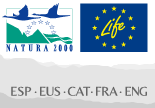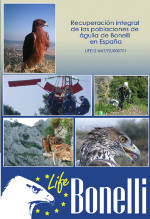
- Details
- Created: 28 November 2013
- Hits: 2715

The target species of the project is Hieraætus fasciatus* (Viellot, 1822) or Aquila fasciata. It is also known in Spanish as águila de Bonelli, águila perdicera or águila-azor perdicera.
The Bonelli's Eagle is listed in Annex I of the 2009/147/EC EU Birds Directive and in Appendix II of the Bern, Bonn and CITES Conventions. It is included in the Ornis Committee list of high-priority bird species for the funding of LIFE. It is SPEC 3 (an unfavourable conservation status in Europe, but the population is not confined to Europe), in agreement with BirdLife International (2004).
It is also subject to different ranks of protection at regional and national levels.
Ecology of the species
The Bonelli's eagle is a rupicola and thermophile species, which inhabits Mediterranean areas in Europe with uneven topography, from sea level to 1,500 metres. Their preferred habitat consists of clear terrains with small forests and scattered woods, combined with farmlands and Mediterranean scrub.
It typically nests in cliffs, with one or several nests in use. It produces only one lay of two eggs. Reproduction occurs from the beginning of February to the end of June. Incubation is over 37-41 days and the chicks stay in the nest for 60-70 days. The fledglings fly in mid-June and stay in home territory until September.
Breeding birds are territorial, monogamous and sedentary. The territory can vary between 40-120 Km2, depending on the availability of food. It feeds on medium-sized prey, which it captures in flight or on the ground, from perches or premeditated flights. Hunting is carried out in groups. The diet is composed of rabbit, corvids, partridges, doves, raptors and other birds, as well as rats and lizards.
Fledglings attain notable juvenile dispersal and reach sexual maturity at the age of 3-4 years. They have an apparent philopatric tendency to remain in home areas. The birds will fly free for an estimated 20-25 years. Indeed, the sporadic nature of these fledglings complicates observation and recovery of the species. As a result, comprehensive monitoring and tracking is required.





















